In full: Lawrence Wong's ministerial statement on whole-of-government response to COVID-19
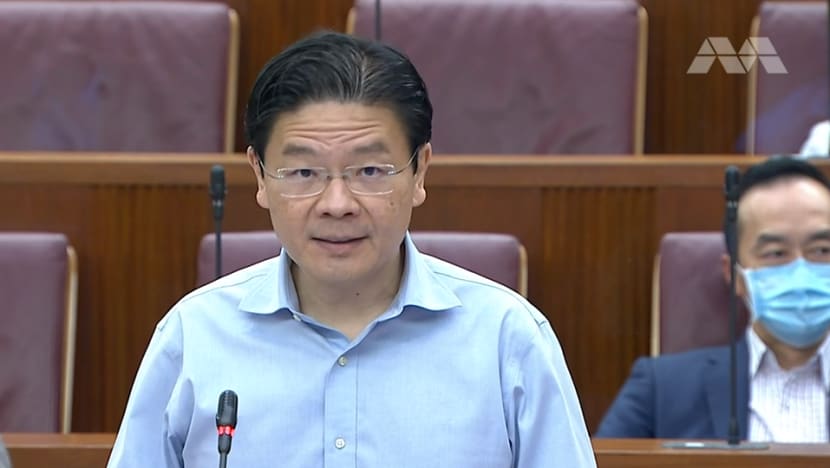
Education Minister Lawrence Wong speaking in Parliament on May 11, 2021.
SINGAPORE: Education Minister Lawrence Wong on Tuesday (May 11) delivered a ministerial statement in Parliament on Singapore's whole-of-government response to the COVID-19 pandemic.
Mr Wong, who is co-chair of the multi-ministry task force dealing with COVID-19, said the country is on knife-edge, with community case numbers that could go either way in the next few weeks.
This is his full speech:
Mr Speaker sir, we’ve been fighting this virus for more than a year. We’ve said this is a marathon, not a sprint. Really, no one knows how long the pandemic will go on for. Vaccination is key to ending the pandemic. But it will take a very long time to vaccinate the world.
Meanwhile, the virus is not waiting for us. It is changing and mutating quickly. New variants are spreading faster than the current pace of vaccinations worldwide – these variants are more infectious, and potentially more virulent and more resistant to the current vaccines.
So there’s still a long road ahead of us in this fight against COVID-19. We don’t know how the path of the pandemic will evolve. We must be mentally prepared for a long road ahead with many curveballs, and many more twists and turns.
One scenario is that the virus will never go away. It becomes endemic to the human population. We will then have to learn to live with it.
At a personal level, this means we try to lead our lives as normally as we can, but manage the impact of the virus – by getting vaccinated every year, and taking sensible precautions.
As a country and economy, we will then continue to connect with the world to earn a living – but we set up strong border defences, establish protocols for safe business travel, partner safe countries to open up our borders, and keep hospitalisations and fatalities as low as possible.
We are not there yet, but we are planning ahead, looking at different scenarios of how the pandemic will unfold, and preparing our drawer plans and responses.
READ: Tighter COVID-19 measures important as Singapore is on knife-edge: Lawrence Wong
In this journey, we are bound to face some bumps and setbacks. We worked together to overcome some of these difficult challenges last year. After we exited the circuit breaker, we set out a three Phase roadmap to re-open our economy and resume activities.
We highlighted then that this re-opening process was not going to be a straightforward one, and that there would be potential stops and starts along the way.
Because the virus has not been eradicated in our community, and new cases can leak through our borders despite our precautions and safeguards. So the more we open up, and the more activities we undertake, the higher the risks of new cases breaking out in the community.
SINGAPORE'S APPROACH ON BORDER MEASURES
So how do we manage COVID-19 and protect both lives and livelihoods under these difficult circumstances? Several Members (Mr Yip Hon Weng, Mr Don Wee, Mr Alex Yam, Mr Liang Eng Hwa, Ms Jessica Tan, Mr Saktiandi Supaat, Mr Leong Mun Wai and Mr Seah Kian Peng) have raised questions about our border measures, so let me provide some perspectives.
One option is to shut our borders and minimise the flow of people into Singapore. Larger, continental-sized or resource-rich countries like China, Australia and New Zealand have taken this approach. They are able to keep things going with their own resources and people, and sustain a living with their own domestic demand.
But Singapore is in a completely different position. We are a little red dot fully plugged into the world. Trade and travel are our lifeblood – for us, these are not just good-to-have; they are existential issues. They are how, as a country, we earn a living and, remain relevant to the world.
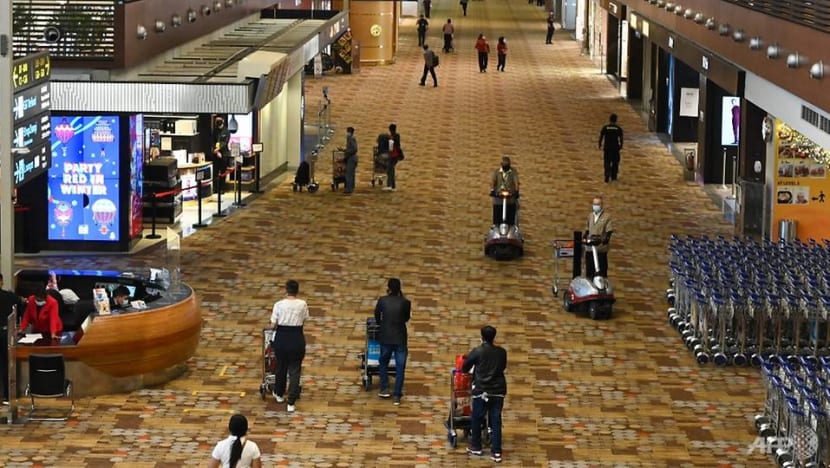
In other words, we can keep our borders closed for a short time, but not over a prolonged duration. And that’s why after we exited the circuit breaker last year, we also progressively lifted our travel restrictions, and allowed travellers to come in, but in a controlled and safe manner.
We recognised then there would be a risk of some imported cases leaking into the community. And so we have taken several steps to strengthen our precautions and safeguards.
For example, we put in place a system of regular testing for those working at the checkpoints and borders. We prioritised vaccination for them and those working in our stay-home notice facilities. So vaccination rates are now above 90 per cent for aviation and maritime; and 85 per cent for the stay-home notice facilities.
We stepped up our testing protocols with pre-departure and on-arrival polymerase chain reaction tests. We tightened our stay-home notice regime – ensured that the hotels we use for stay-home notice have proper infection controls and security measures.
We also continue to update the stay-home notice regime to respond to the evolving public health situation here and abroad. Some members have suggested extending the stay-home notice to 21 days.
Indeed we did so initially for the incoming construction, marine and process (CMP) workers, because they would be living and working in higher-risk settings. So these workers would serve out 14 days in the SHN facility, followed by seven days in the migrant worker on-boarding centres.
We also applied a 21-day stay-home notice for arrivals from the few countries where the variant strains originated from – the United Kingdom, South Africa, and India. But these strains are now circulating everywhere in the world, so it has increasingly become difficult to target just countries where the strains originated from.
READ: Virus variant from India 'concerning' as infections could spread 'quickly and widely', says Gan Kim Yong
I should clarify that there is still no evidence that the new variants have a longer incubation period. But variant or not, there is always a very small tail risk of such long incubation cases. And that’s why we have moved recently to a tighter 21-day stay-home notice regime for travellers from all higher-risk countries during this period of heightened alert.
Ms Nadia Samdin asked if it is possible for vaccinated citizens and permanent residents who travel abroad to serve their stay-home-notice at home.
At this stage, we prefer to take a more cautious approach and have all travellers from higher-risk countries serve the stay-home-notice in dedicated facilities. But we will continue to review and consider options for the future, especially as we gain a better understanding of the new variants and when more of our population is vaccinated.
Mr Yip Hon Weng also asked about the business travellers who do not need to serve stay-home notice.
We have explained before that we allow a small group of such travellers for essential work reasons. We control the risks tightly by keeping the numbers small, and requiring them to adhere strictly to a controlled itinerary.
We also subject them to frequent testing while they are in Singapore to ensure they are free from the virus. The scope and usage of such travel passes are subject to constant review and close monitoring, to ensure they are used in a safe manner, while minimising the risks to the community.
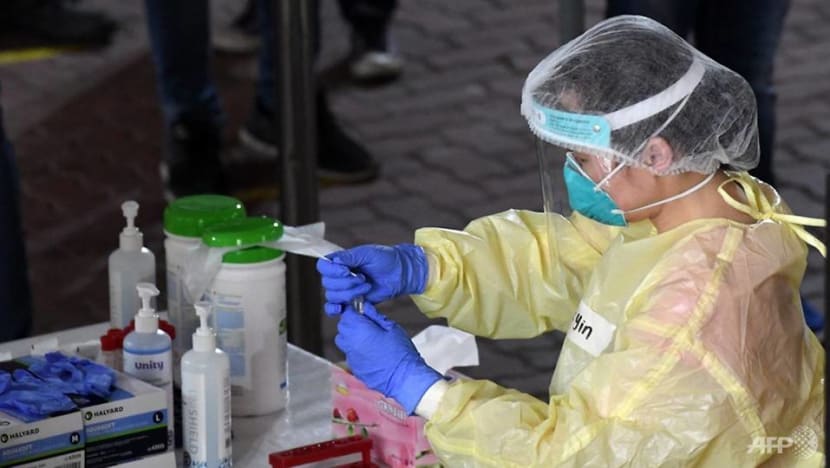
Importantly, besides the stay-home notice and testing protocols, we control tightly the overall flow of travellers coming into Singapore. This is a dynamic process – we adjust the travel flows from each country regularly based on our assessment of the public health situation.
Once we observe any deterioration in any country or region, we will throttle down the numbers and impose stricter border restrictions for that country or region. And that was the approach we took recently because of the rapidly deteriorating COVID-19 situation in India.
In April we reduced entry approvals for long-term pass holders and short-term visitors from India. Later we moved to ban all travellers from India. This ban was extended to the entire South Asian region from the start of May.
READ: Singapore to bar visitors from Bangladesh, Nepal, Pakistan and Sri Lanka
Let me share some numbers to provide a better perspective. Pre-COVID, we had 200,000 travellers coming through Changi Airport every day, both on transit as well as entering Singapore. This plummeted during the circuit breaker when we closed our borders temporarily.
After the circuit breaker as I mentioned, we eased some of our travel restrictions. By November last year we had about 820 arrivals a day, compared to 200,000 transit and arrivals. Between December and March this year, the figure has been stable at about 1,200 arrivals per day.
One reason for the increase in arrivals is that we had taken in more migrant workers for the CMP sectors as well as foreign domestic workers (FDWs). This group was also the largest contributor to our imported cases – they account for about 40 per cent of the imported cases over the recent six months.
But even as we increased the flow of these workers, we also implemented a tighter screening and quarantine process for them. So these imported cases were already in stay-home notice when we detected them, and they were not in contact with the community.
But the inflow of CMP workers we’ve allowed up to now is still unable to meet our needs. Because every day, every week, every month, many migrant workers have left to go back to their home countries. Whatever numbers we are bringing in barely replace those who have left.
Our companies including many SMEs urgently need new workers to make up the shortfall, and have been applying to MOM for approval to enter Singapore as you heard just now in the Parliamentary Question posed to Minister Tan See Leng.
READ: Singapore reviewing if more can be done to help firms hit by labour crunch, entry curbs: Tan See Leng
The application backlog has been building up significantly, even before we imposed the latest set of travel restrictions on the South Asian region. And now the manpower crunch has worsened.
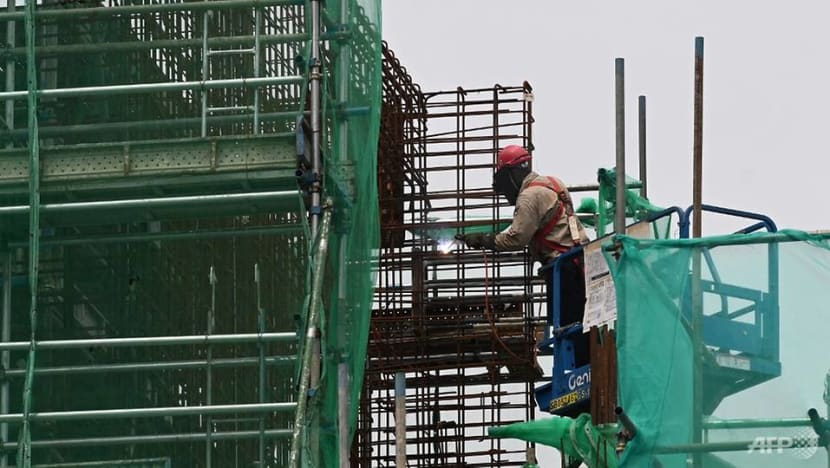
IMPACT OF BORDER CONTROLS
Now I fully understand and share the desire amongst many to be tight on our border measures; in fact we have maintained a tight posture as I have explained, and will continue to do so. But we also need to be very clear what this means for Singapore and Singaporeans.
Contractors will be especially hard hit. Building projects will (be) delayed. In particular, we can expect many new BTO projects to be delayed by one year or more. Private home buyers may also face delays of varying lengths.
READ: BTO projects expected 'to be delayed' by a year or more due to tightened COVID-19 border measures
Likewise companies in the marine and process sectors will be badly affected. They will find it hard to deliver their existing projects on time, and a few may even have to forgo new opportunities and projects.
These are important sectors that we have taken decades to build – they hire thousands of Singaporean engineers and executives, and they remain crucial sources of highly-skilled jobs.
The manpower shortage will not be confined to the CMP sector. It will have a cascading effect on the whole economy. In fact, any company seeking to bring in workers from higher-risk countries will now face considerable delays – the waiting time for an entry approval could be more than six months.
READ: Companies seek alternatives as workers from India, Bangladesh dwindle
And our big concern is that if companies continue to face difficulties or are forced to close, we could then end up with higher unemployment and job losses for Singaporeans.
Stresses will be felt in our society too. Singaporeans will find it harder to reunite with their families abroad. Families applying for new FDWs to care for their children or elderly will have to wait for at least two months.
These are the consequences of keeping our borders tight, and I hope Members in this House will help to explain this to your constituents when you receive appeals, be it to shut our borders completely, or to relax the restrictions to allow their workers or FDWs to come in.
Meanwhile, the Government will do more to assist the CMP sector which is bearing the brunt of the impact. The industry has been working very hard to become more manpower lean. But this will take time.
That’s why MND has set out new legislation to allow existing construction contracts to be adjusted to take into account the increase in manpower costs. We are debating that later.
As announced recently, CMP firms will receive higher foreign worker levy rebates from May to December 2021. The rebate for each work permit holder will be increased from S$90 per month to S$250 per month. We will also continue to work with the CMP employers to find safe ways to bring in workers to alleviate the manpower shortage.
Beyond the CMP sector, as well as the aviation and tourism-related segments, there are signs of improvement in the broader economy. Barring a setback to the global economy, and provided we are able to keep the COVID-19 situation under control, we should be able to continue with our recovery trajectory.
But things are very fluid and the outlook remains uncertain. The Government will continue to keep a close watch over the economic situation, and consider how best to support those who need more help to adjust.
At the same time, businesses will also need to be more agile, and to start factoring (in) the need to pivot plans or operating models at short notice. We will all need to learn to adapt quickly and be more nimble in this new uncertain and rapidly changing environment.
COMMUNITY MEASURES
Even with the tightest of border controls, there may still be imported cases leaking into the community. I shared earlier that countries like China and Australia have adopted a tighter border regime than us because they can afford to rely on a larger base of domestic resources and demand. But even these countries have detected cases of new variants in their communities.
So we cannot just rely on border measures to keep out the virus; we also need to have a full suite of protective measures and safeguards in our community. When a new case pops up, we move in quickly to isolate all the close contacts and ring-fence them.
As we have been doing, we cast a wide net and conduct mass testing for all persons with possible exposures to the infected case, like what you see recently when we went in quickly to test everyone in the school, or everyone working at the airport. And thus, we try our best to prevent large clusters and outbreaks from happening.
READ: Victoria Junior College student positive for COVID-19; more than 100 students, staff members quarantined
READ: About 9,000 to be tested as Changi Airport steps up COVID-19 precautionary measures
Despite these efforts, there will be a few occasions when we will need more general movement restrictions. For example, with the recent Tan Tock Seng Hospital (TTSH) cluster, the transmission was detected some time after the virus was introduced into the ward. We’ve tested all the TTSH staff, patients as well as visitors to the hospital and tried to ring-fence the cluster.
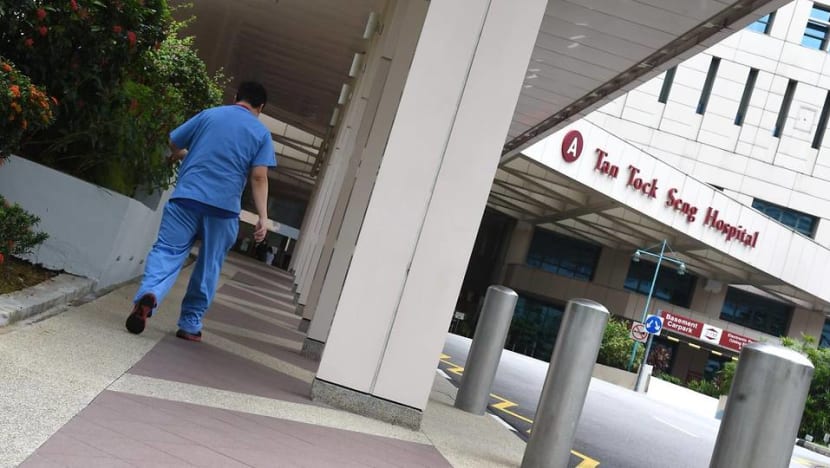
But we could not be sure if there were still hidden cases out there in the community. That’s why we decided to tighten the overall rules preemptively – to reduce our movement and social contacts more generally, so that we can reduce the risks of transmission and curb any further spread of the virus.
READ: ‘Several important lessons’ from Tan Tock Seng Hospital COVID-19 cluster, says Gan Kim Yong
I recognise that these measures pose considerable inconvenience to Singaporeans. As Minister Gan (Kim Yong) said just now, there are several public holidays coming up in the month of May. Many activities and plans have had to be adjusted.
I know in particular this must be very hard for our Malay/Muslim community – having to observe these strict rules during Hari Raya, and to curtail your normal family visits for a second year. Likewise for the Buddhist community during Vesak Day.
READ: No ‘full scale’ celebrations: Muslims in Singapore adjust Hari Raya plans amid COVID-19 curbs
I hope everyone understands why these measures are necessary. I thank everyone for taking the latest measures in your stride and seek your cooperation to abide by them – not just with the letter of the law but also the spirit of it.
I think it is very important for us to understand that we are now on knife-edge and our community case numbers can go either way over the next few weeks. We have a chance of getting things under control by the end of the month.
But as we know from experience, it only takes one lapse or one irresponsible action for an infection to spread; and that infection may end up being a super-spreader event in the community. So let’s all do our part – work from home, cut back on social activities and interactions, and stay home as much as possible during this period.
CONCLUSION
This is not the first time we’ve had to deal with spikes in community cases. But compared to a year ago, our capabilities have significantly strengthened.
Our testing capacity is much larger – we tested about 35,000 swabs per day in the past week, and have the lab capacity to test up to 73,000 per day, or even more with pooled testing. TraceTogether and Safe Entry are now more pervasive, which means we can contact trace and ring-fence cases more quickly.
READ: Mandatory TraceTogether-only SafeEntry brought forward to May 17
We are also regularly testing persons in higher-risk settings and undertaking surveillance testing for symptomatic individuals, which is how we uncovered many of the cases reported over the recent days.
Importantly, vaccination is a major game changer. We haven’t vaccinated everyone yet, but we have covered most of our older population as well as our healthcare and frontline workers at the air and sea ports and our stay-home notice hotels and dormitories. This puts us in a much safer position.
READ: 1.8 million people have received at least one dose of COVID-19 vaccine: Health Minister
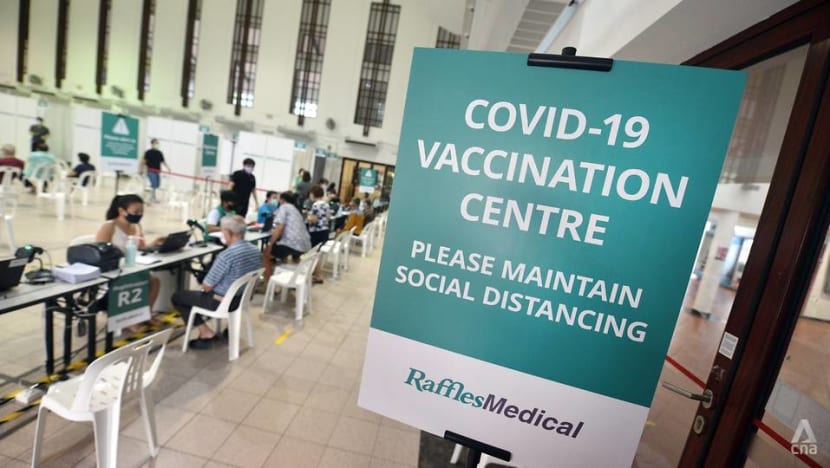
Our experiences over the last year have shown that if we act swiftly to contract trace, isolate, test, and if we all exercise individual and social responsibility, we can effectively suppress the spread of the virus. We’ve brought down infection rates in the community before, and we can do it again.
We must also continue to support one another. Many have been fighting COVID-19 for more than a year. For example, our healthcare professionals testing, vaccinating and treating patients; our contact tracing teams; our public officers across multiple Government agencies; our safe distancing ambassadors and enforcement officers, and many, many more serving on the frontline.
It has been very tough for all of them. So to them we say thank you. Keep your spirits up and all of us are behind you every step of the way.
READ: Healthcare workers being asked to move out, shunned in public a ‘very worrisome trend’: Gan Kim Yong
The best way to support our frontline workers is to take all the prevailing measures seriously – do your part to reduce the risks of transmission, and when vaccination is offered to you, take it up as soon as possible.
Avoid spreading falsehoods or unverified information that can cause needless fear, or foster divisions and suspicions in our society. Remember the virus does not respect ethnicity or nationality. This is not a Chinese virus or an Indian variant.
This is a global pandemic – the virus and its variants are out there everywhere in the world. So there is no place for discrimination, racism or xenophobia here in Singapore. We must continue to stand together, look out for each other, so that we can all get through this together.
Mr Speaker, working together over the past year, our overall situation has improved. Yes, we’ve had our share of setbacks, but we’ve learnt and we’ve bounced back from them. Importantly we’ve seen the Singapore spirit shine brightly throughout these challenging times.
So let’s draw confidence from what we have been through; let’s brace ourselves for the rest of the marathon, complete the race together, and emerge stronger at the finish line.
Watch his full ministerial statement:
BOOKMARK THIS: Our comprehensive coverage of the COVID-19 pandemic and its developments
Download our app or subscribe to our Telegram channel for the latest updates on the coronavirus outbreak: https://cna.asia/telegram










